Selah Audio Compatto Review
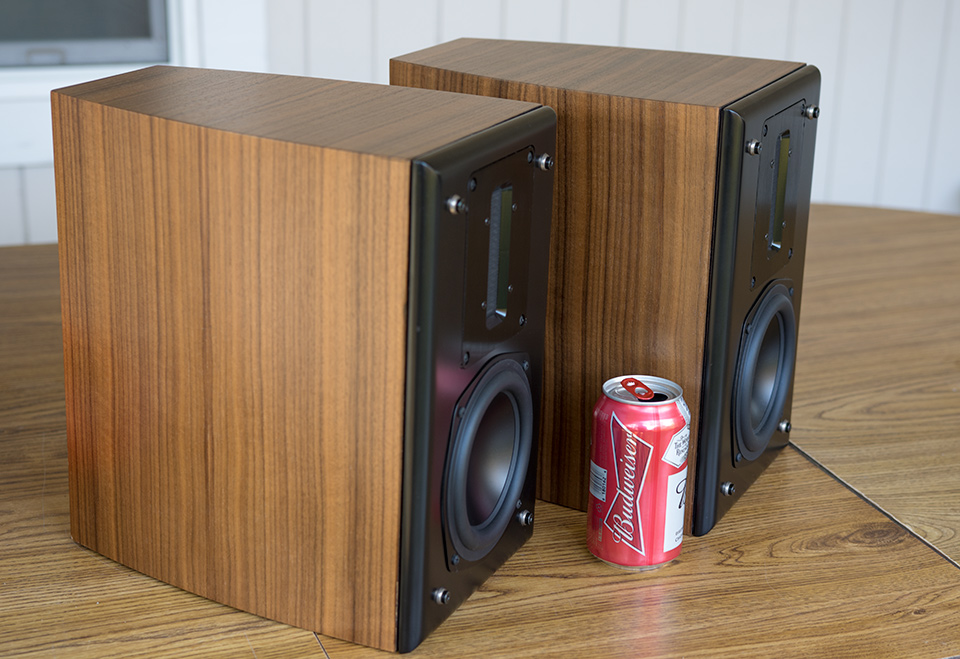
Dang yo, That a nice looking pair of speakers!
Selah Audio is a brand I have some experience with, and while I'm not on the payroll I have been enjoying and recommending their speakers for years. Worn out from months of roasting bad speakers I put up the bat signal to Rick Craig at Selah hoping he would have some good speakers to send me. Rick let me know that he was working up a small speaker that might work on a desktop. After finalizing the conditions of the demo he was suckered into sending me his test bench speakers. These are still fitted with the test baffle and have a few blemishes from swapping drivers out during development.
Component Overview:
Tweeter
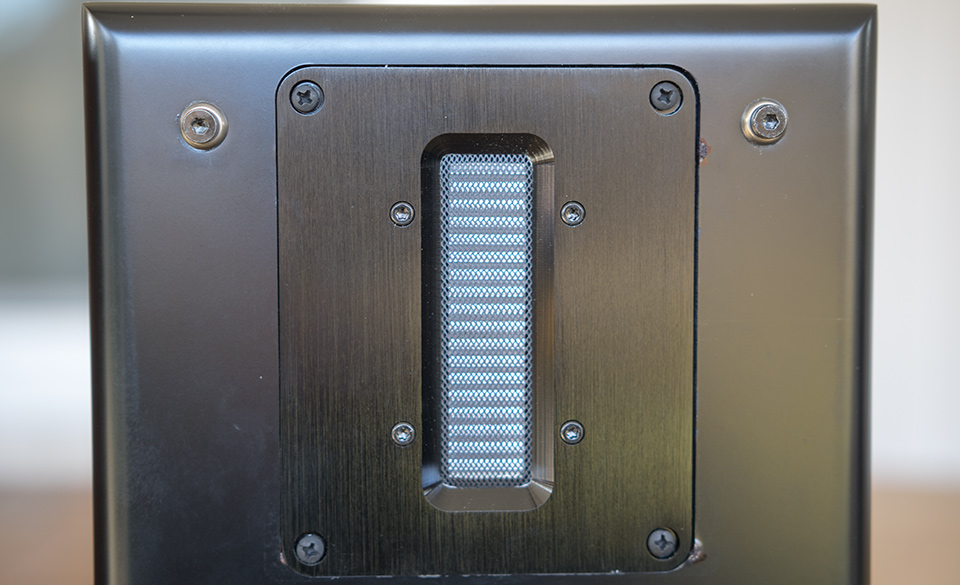
The star of the show, this true ribbon tweeter is a custom unit made just for Selah audio.
Ribbon tweeters are an extremely thin piece of textured aluminum tensioned at the top and bottom and surrounded with enough neodymium magnets to bend space time.
This ribbon is pretty damn big, 0.7 inches wide and 3 inches tall. This is 2.7 times the surface area of a regular 1 inch dome tweeter.
Note that while I normally make fun of grills built into a tweeter, the exception to the rule is when the tweeter is so magnetic it will attempt to eat full sized screwdrivers.
Woofer
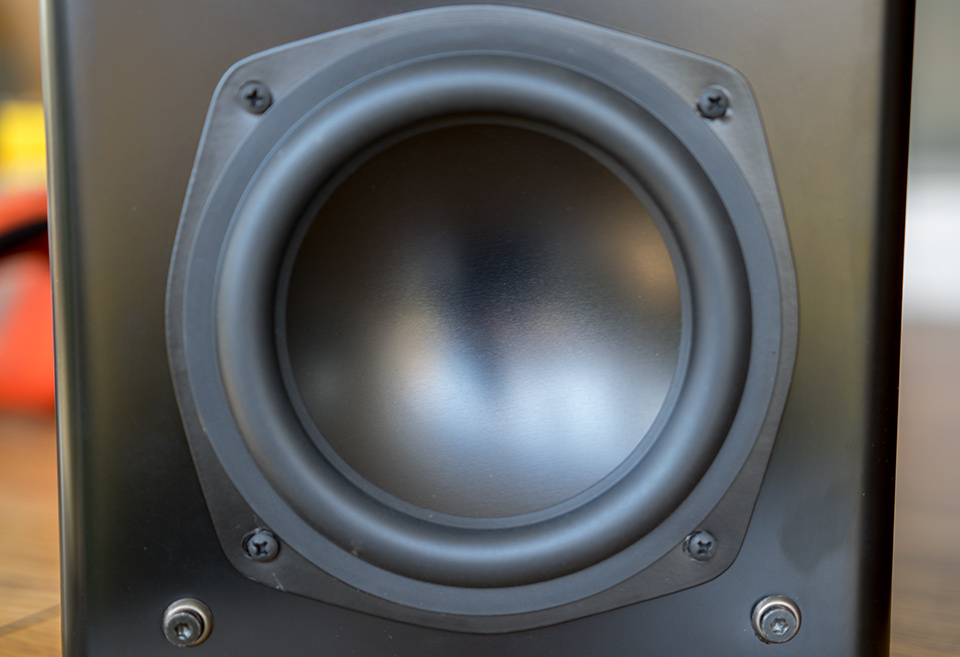
This is a nice looking 5 1/4 inch driver that is surface mounted with an aluminum cone and large rubber surround. While I'm not a fan of inverted dust caps, this is a one piece cone and should be fine because the crossover point is pretty low.
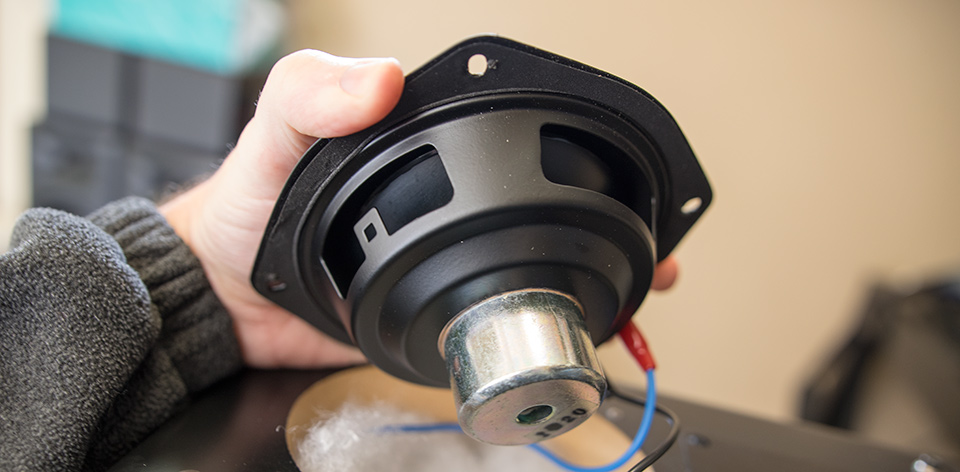
Giggle about the size of the magnet all you want, but this is a copy of the venerable NRT motor system from Aurasound which uses neodymium magnets stacked in such a way as to direct all of the magnetic energy at the voice coil. The basket is pretty thin stamped steel, but with that little motor hanging off of the back it should be fine.
Port
No port on these speakers, they are sealed which gives a smoother roll off of the bass instead of a sudden drop off found in ported systems. Choosing to go with a sealed speaker is a trade off of quality of bass over quantity.
Cabinet
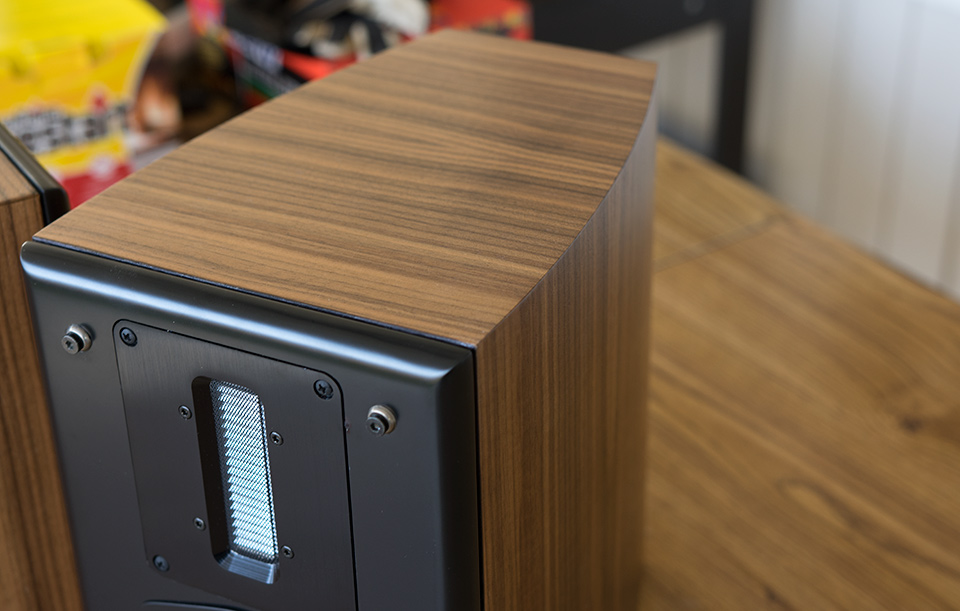
Selah is using the Dayton curved cabinet box on this speaker. Instead of the standard finish we have an expert veneer job which is a nice looking raw walnut. Now I'm not going to shit you here, this is the nicest constructed box I've ever pulled apart. Big chunky bracing, nice high quality mdf coupled with the curved shape. These things weigh 17 pound a piece and really feel more like a solid chunk of wood than a speaker.
Terminals
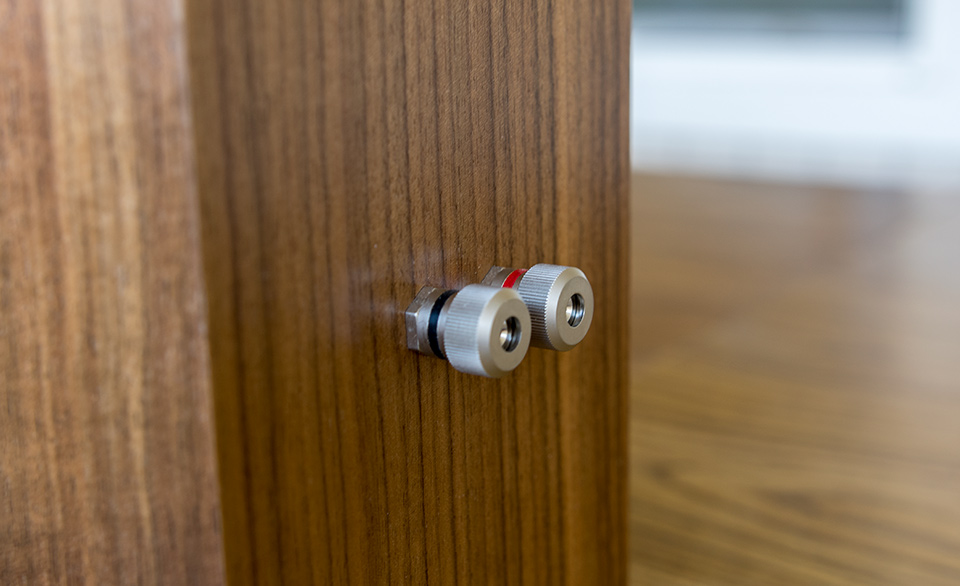
No terminal cups, instead we have some sharp looking nickel terminals. These are a nice touch, and easy to use.
Crossover
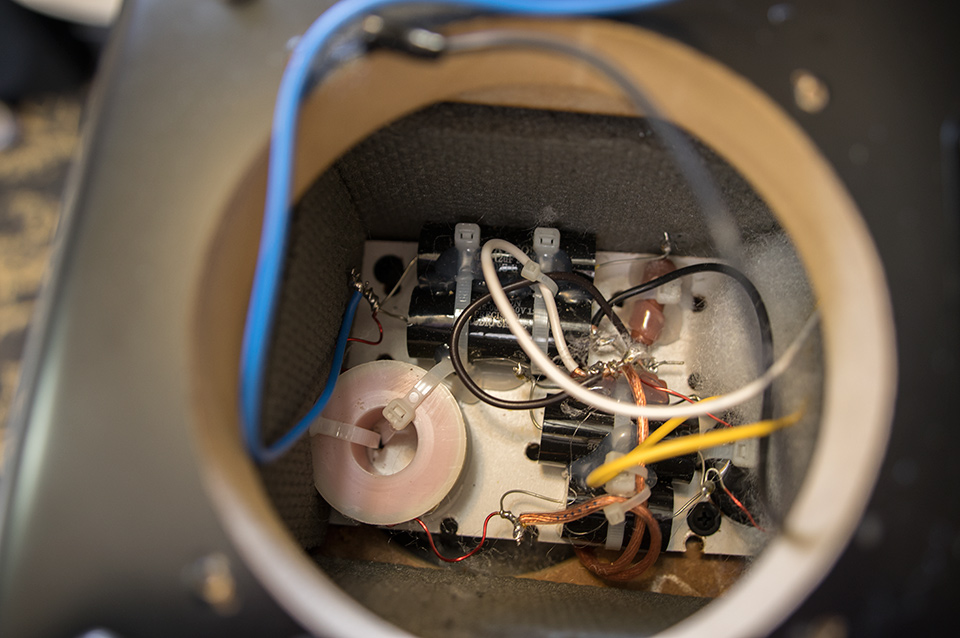
Hand built crossover shows signs that the designer has been in here fiddling. As far as parts we have two groups of very large poly caps, two air core inductors, and a nice close tolerance Mills resistor. To me it looks like a 2nd order with baffle step. Rick told me that acoustically(if you take into account the natural roll off of the drivers) it's a 4th order crossover at 1900Hz. This low crossover point means that the ribbon will be responsible for a larger portion of the audio coming from the speaker. It also means that the ribbon should have no trouble matching the dispersion with the woofer at the crossover point.
Grills
The speaker came with magnetic grills. They looked alright but I didn't use them.
Desktop Setup:
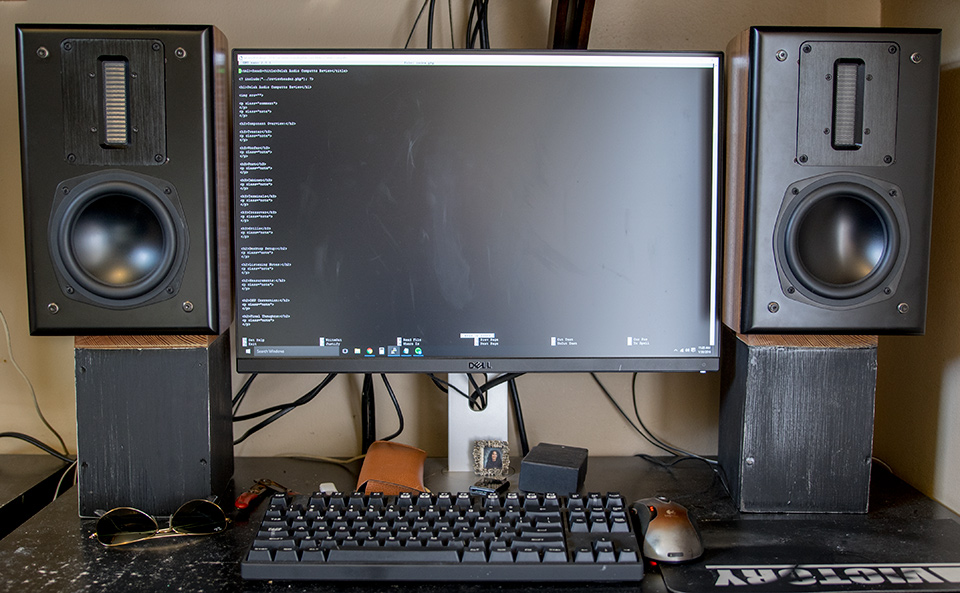
Rick had a bit of first date jitters and was worried that the speakers were a little too narrow vertically for desktop use.
I assured him that everything was going to be fine and that people generally sit at their desks if they are listening to music.
Yes, you have to sit down for these speakers. They sound best by a wide margin when on axis with the tweeter.
If you stand up in front of them you will lose most of the treble, but moving around in your seat is just fine. Honestly these sound more coherent than many dome based speakers I've heard.
Desktop Listening Notes:
I am floored, these are magic. It's a miracle, after months of dealing with speakers that have obvious flaws these are smooth as silk.
Big fast tweeter crossed low with a smooth extended response, controlled vertical dispersion without horn effect or higher order modes, coupled that with the wide horizontal dispersion. This is my type of speaker.
I can hear not just the vocal performances, but the microphones used, vocal filter effects, everything broken down. This is not artificial rising response detail, this tonally flat non headache inducing clarity.
I hear not just the cymbals, but how they were hit... and horns, holy shit the horns. For people that think horn loaded loud speakers do horns well, you need to hear some brass coming out of a good ribbon.
Bass is lacking for sure, but because the roll off is gradual I can hear deeper notes even though it is below the rest of the music.
I've been powering these with my little $60 SMSL SA-50, just to upset the purists and it's doing a good enough job getting the speakers up to 84dB.
To get more out of the speaker I hooked up the old onkyo receiver for more power. This gives a little more headroom pushing 95dB nearfield before I hear congestion, but it does not expose any other weaknesses from the previous setup.
The speakers are throwing a massive sound stage which extends from the left wall all the way to the right speaker where it hits my right wall and becomes a blurry mess.
The poor placement of the speakers is the limiting factor of the imaging.
Better placement Desktop setup
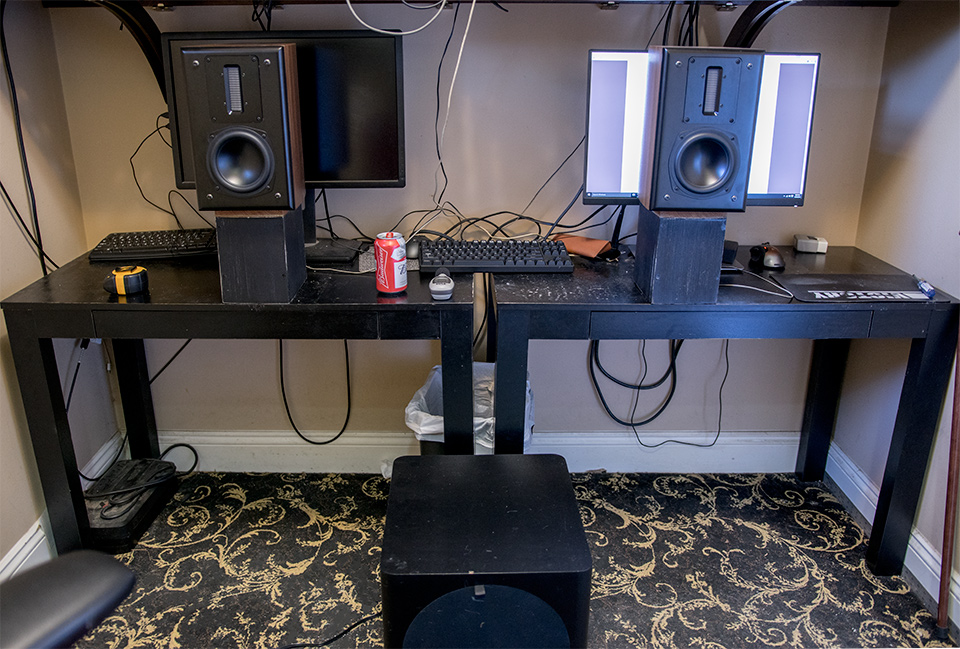
There are only a handful of speakers that have been good enough to merit better placement in my office.
Even though the Compatto is sounding exceptional in my default shit placement I want to see the limits of the speakers performance in a small room.
I cleared off the desks, invited some friends over, and put the speakers in a rule of thirds placement.
Better Placement Desktop Listening Notes:
Drop the screen, here comes the performance... These couple with the room instantly and put on a show very similar to my main system.
Music is not everywhere, it's clearly in front of me, but extends all the way across the room and infinitely deep.
I'm not getting much volume as far as the SPL meter is concerned, but the sound fills up the room to the point where 85dB is enough for me to not want more.
No matter the song playing I am paralyzed by the sound quality and can't bring myself to skip tracks mid song. The music is in control.
Even with the bass rolling off male vocals and all of their fundamental growling are present and accounted for with nothing lacking in the lower midrange
Wes came by to pick up his B&W speakers and to give the speakers a quick listen. He said they sounded really good noting that they did many of the same tricks as my large system.
Scott made it by later in the evening and his assessment after a few tracks was a bit more enthusiastic, "Those tweeters are fucking good."
He also guessed that the speakers started rolling off around 100Hz, and as a bass head he said they needed a sub.
Entertaining company is something I pride myself on, so I hooked up a stupid cheap Dayton 10 inch sub that I have for testing. Here is the thing though, generally speaking I don't like subwoofers.
They are hard to place, and in nearfield setups localization is a huge issue.
To integrate it I set the sub in between the speakers and crossed at 60Hz, just bumping the gain above inaudible.
The sub did help a little to balance the sound, but with it's budget construction it was in no position to try match the sound quality of the Selah speakers.
Keeping the volume low on the sub made it passable but not great.
More spirited listening pushed the speaker out to 95dB, and at this point the speaker is still sounding good and really overpowering the little room.
While they may have more in them, one quick glance at the little woofer going ape shit kept me from pushing further. These are going to need a high pass filter to have any chance of get really loud.
Living Room Setup:
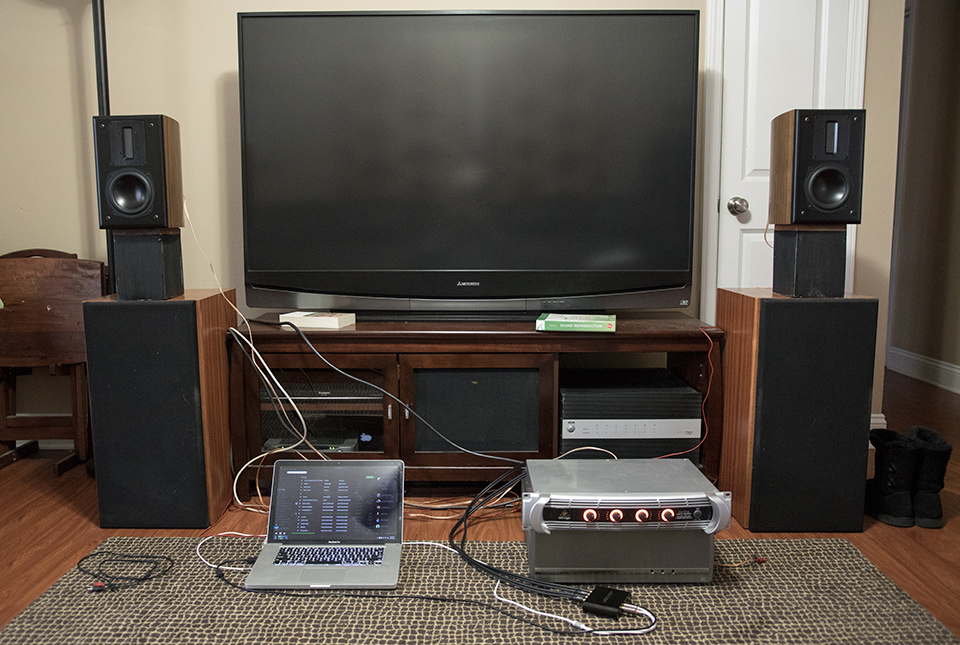
For testing I pulled the tops off of my speakers, hauled out the Kinergetics KBA-75, a bundle of speaker wire and an adapter to use my phone as the source on the old Class A amp. To start off I didn't use any stands with the speakers just putting them right on top of the stereo subwoofers.
Living Room Listening Notes:
Standing up and walking around the speakers perform better than expected off axis.
Bass while still lacking seems fuller than my little office, the difference is more than likely the room mode interaction, something you can mostly avoid in a nearfield setup.
With the speaker below the listening axis male vocals seem recessed, with the prominent energy coming from the speaker being the upper treble.
I pulled out my desktop stands and found that picking the speakers up above the seating position solves any perceived beaming effect and also makes the speakers sound considerably better while standing in the room.
With the speakers up the sweet spot is more prominent, but listening position is still pretty wide.
A headroom test pushed the limits of my phone source which did not have enough preamp signal for the big amp.
I brought out the laptop to use as a source, and it powered the speakers to a quite loud, but not satisfying 90db in the listening position before things started sounding nasty.
Imaging in this larger room is pretty good, the Compatto's throw a nice full sized sound stage with very good accuracy.
Side reflections are not as prominent as with my main system. Choral effects don't stretch to the walls.
Pushing the speakers out 1 foot widens the sound stage without becoming 2 separate speakers, but the new placement nets no exceptional imaging improvements.
At this point I pulled out the minidsp and Behringer iNuke 4 channel amp. I set the minidsp up to mimic the 80Hz crossover used in most receivers which is 6dB/octave high pass and 12dB/octave low pass.
Adding in subs helps balance the speakers sound, but the highs still seem ever so slightly over done.
Suprisingly crossing over the speakers to a sub netted no real headroom. At 90db in the listening position the speaker is done and starts compressing the sound.
Measurements:
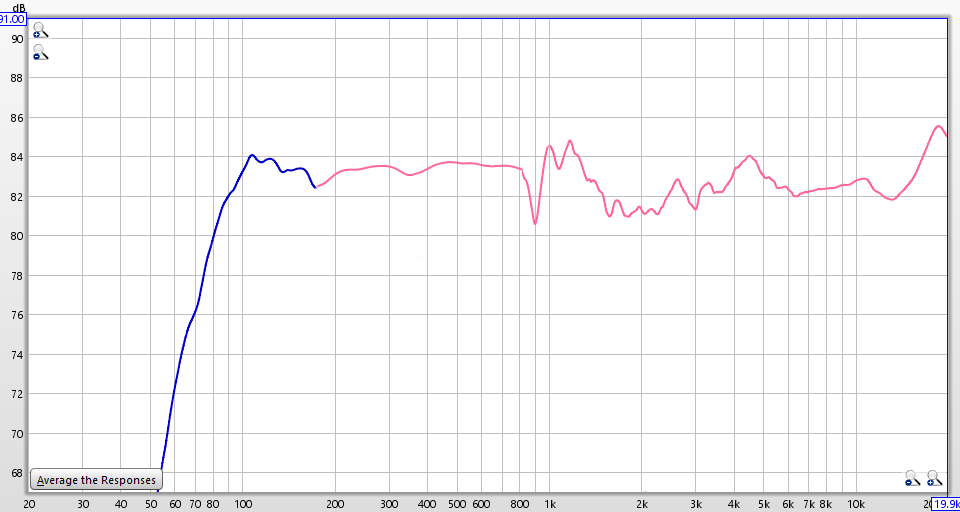
This is a 1/6 octave smoothed response with 2dB increments. My measurements are pretty shit below 700Hz, so I smoothed that section of the graph out. To show a close approximation of the speakers bass extension I pasted in close mic measurement of the woofer roll off. The Selah Compatto is damn near +-1dB through the treble range.
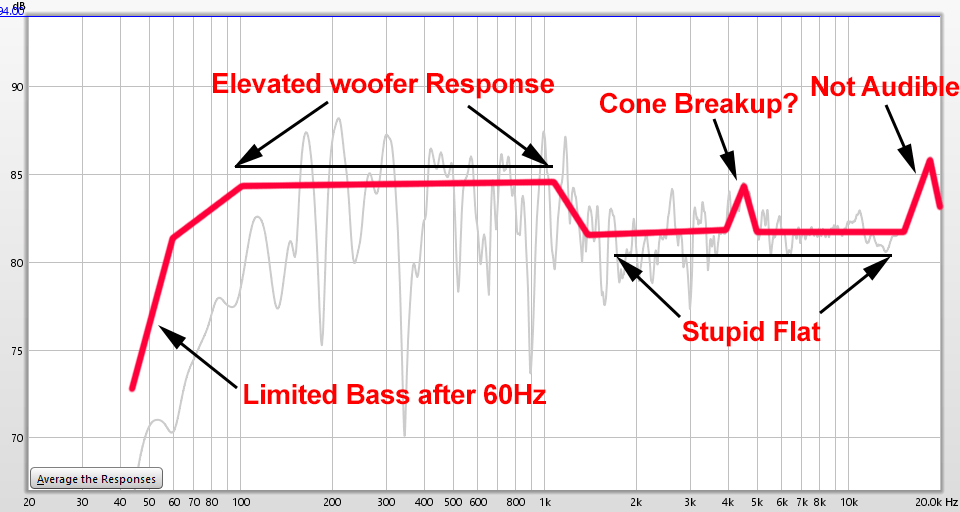
Here is a 1/24 smoothed measurement with my comments laid over.
Starting from left the right we have limited bass response, with the speaker starting to roll off at 100Hz, and anything below 60 might be audible but not damn near as loud as it should be. The woofers midrange response is slightly elevated over the tweeter, probably to take into account the extra horizontal output from the ribbon tweeter. There is a 1.5dB blip at 4.5k that seems to be cone breakup from the woofer, but does not show up many in other measurements. The sharp rise at 18K is not audible by humans because we really suck at hearing frequencies that high.
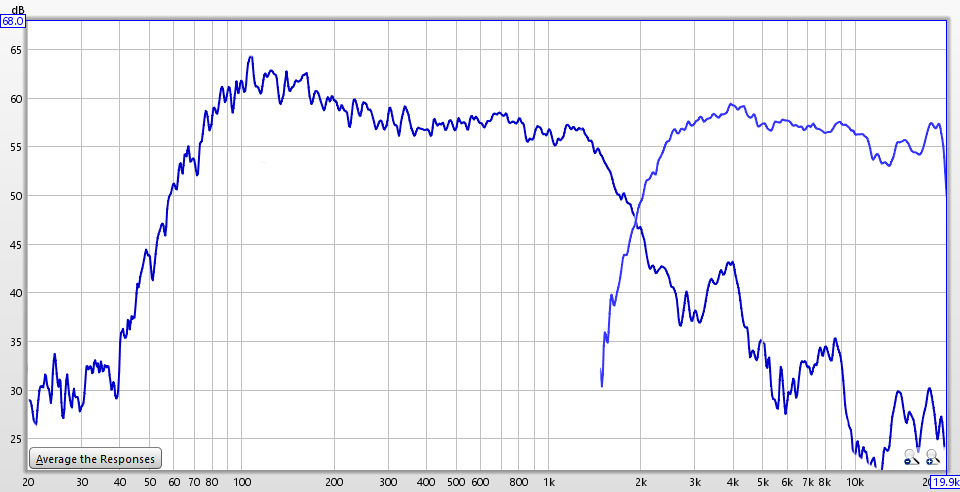
Rick told me that close driver measurements are not an accurate way of determining crossover slope, but they seem to do a pretty good job here. Nice sharp slope, and crossover at 1900Hz. We can see the cone breakup here is 15dB down from the woofers response, so maybe the on axis anomaly is coming from somewhere else.
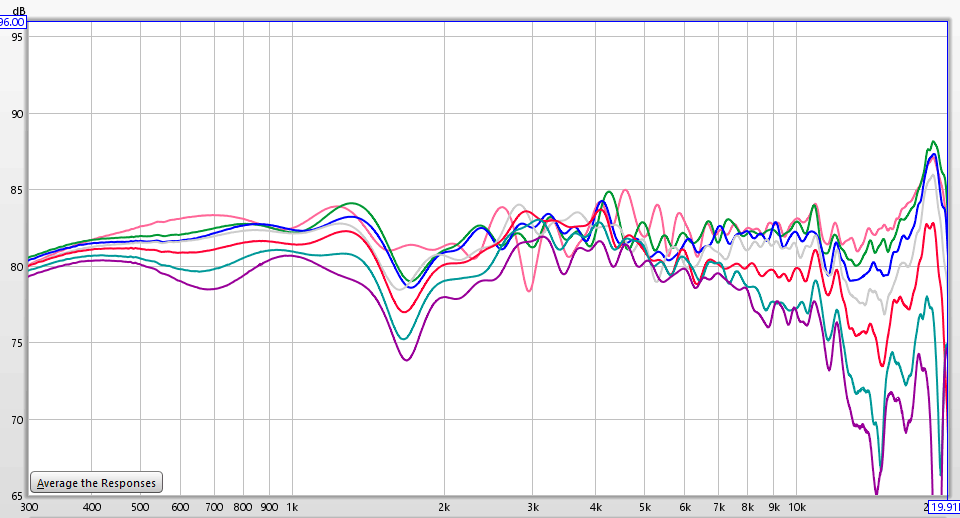
This is group of measurements is from 0-60 degrees off axis in 10 degree intervals. These are windowed to avoid any reflection data from the room, which limits the results to 300Hz and above.
Here we see the power of the ribbon and a nice crossover. The null at the crossover is very limited, and the speaker remains dead flat to 14k all the way out to 30 degrees off axis, rolling off only 5dB at 60 degrees.
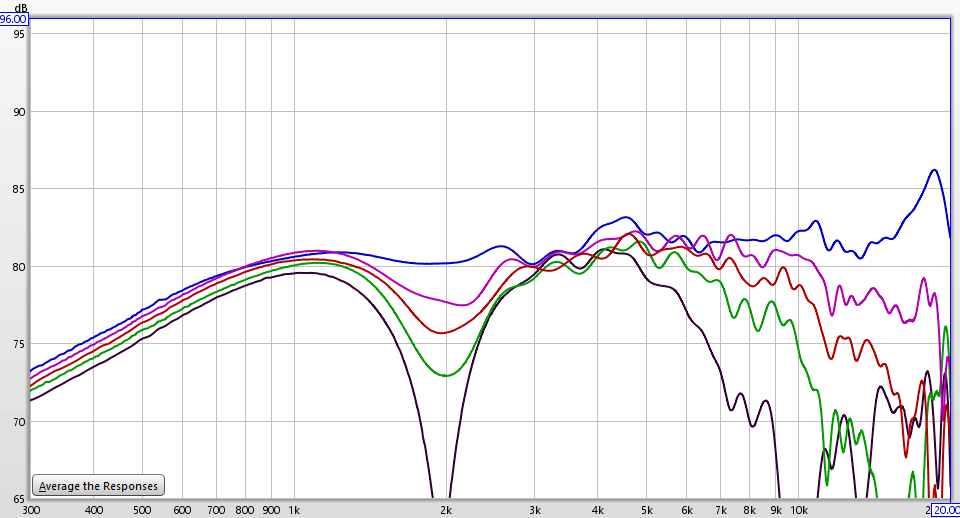
This is group of measurements is vertical off axis, showing the pattern control of the ribbon. These are windowed to avoid any reflection data from the room, which limits the results to 300Hz and above.
At 2kHz we have a null off axis from the crossover, which is pretty standard issue lobing for a 2 way speaker.
The top measurement is on axis, followed by 12 degrees which looks good, then 15 degrees showing a quick drop off, 20 degrees is just to fill in the gap, finally at 30 degrees which is equivalent to standing 3 feet in front of the speaker that is at desk height.
DSP Correction:
I did try some bass extension DSP, but all I ended up doing with that was lowering the already limited headroom of the speaker while not really making much of an improvement.
Final Thoughts:

These speakers don't play low and are limited by how loud they get, but from 70Hz on up they do what I want a desktop speaker to do.
Now here is the thing to remember, I personally think ribbons are a great way to enjoy music, but it's not everyone's preferred way to disperse sound.
If you want to try it out, the Compattos are damn good example.
For living room systems this speaker will limit your output to "comfortable listening" volume and a subwoofer would really help the bass response.
If you are looking for less compromises, but the same flavor I would highly recommend looking up the product chain at Selah.
While I have not heard them, the Anniversario uses the same tweeter, but a larger box and much nicer woofer to play deeper and louder.
Compatto standard finishes are $995, with Custom veneer as tested is $1395.
I know many of you guys are cheap skates, so I asked Rick in advance for the price tag of a Compatto kit. The presoldered crossover and drivers are $595, and you can pick up boxes for about $200 from parts express.
You can buy the Compatto at Selah Audio's website
Check out the system finder to see kind of cheap stuff I recommend.
Other content you may like:
- Vanatoo Transparent One Review - Software update brings new standard of performance!
- Lone Star Audio Fest 2018 - Staying up late, drinking too much, smoking like chimneys!
- Andrew Jones goes back the be begining, ELAC B5.2 Debut 2.0 Review is up!
- New Scores for all reviewed speakers - Compare and sort for fun!
- Creative Sound Solutions DIY Solution for the high end - CSS Criton 1TD v2 review is up!
- Dayton Makes a Budget Desktop speaker with a crossover - Dayton Audio MK402 review is up!
- Smaller than small, deeper than deep - iLoud Micro Monitor review is up!
- Vanatoo's new speaker, The Transparent Zero review is up!
- SVS Prime Bookshelf Review is now available for your viewing pleasure
- ELAC A-Stock UB5 Listening Impressions are up!
- 30 years in the making, the ancient Bose 901 finally gets measured - The Bose 901 review is up!
- Lock and load, we are hitting the bottom of the barrel with both barrels - The Logitech z313 review is up!
- Bulletproof speakers... No, it's just the B&W 686 S2 Review!
- Declare independence from the British sound! - The KEF Q300 review is up!
- Recommended System Finder - Just in time for the Holidays!
- JBL LSR308 Studio Montor - Super Massive Epic Review!
- Two years after starting this site I finally get around to talking about my stereo.
- Small and cheap speakers transform into retarded and good... Micca COVO-S Review!
- AMT tweeter on a B652? The Dayton B652-AIR is reviewed for great justice!
- JBL LSR305 Studio Monitor Review!
- Zu Essence Review!

